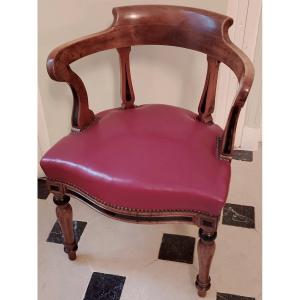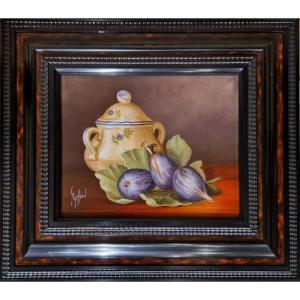46 x 38 without frame
65.5 x 54.5 with frame signed lower right
Iwan Cerf, born February 4, 1883 in Verviers, Belgium, and died May 22, 1963 in Paris, is a Belgian painter, engraver and designer. Cerf began his artistic training at the Royal Academy of Fine Arts in Liège, where he was a student of Adrien de Witte and Évariste Carpentier. In 1901, he moved to Paris to continue his studies at the Académie Julian, under the direction of Jules Lefebvre and Tony Robert-Fleury. He participated in Parisian salons, notably the Salon de la Société nationale des beaux-arts and the Salon d'automne. In 1914, he settled permanently in Paris. During the First World War, in 1917, he enlisted as a volunteer in the artistic section. Work and style Iwan Cerf is known for his landscapes, portraits, figures and still lifes. His art, described as "sober and cerebral", combines poetry and geometric rigor in balanced compositions. His works are characterized by discreet tones, precise drawing and rigorous construction. Exhibitions and collections Cerf exhibited regularly, notably at the Cercle royal des Beaux-Arts de Liège between 1905 and 1919, and at the Salon des artistes français in 1929. He frequently stayed in the South of France, from where he brought back many landscapes. His works are preserved in institutions such as the Musée de l'Art wallon (La Boverie), the province of Liège, the Musée de la Vie wallonne and the Musée des Beaux-Arts et de Céramique de Verviers. Masonic commitment Initiated into Freemasonry in 1911, Iwan Cerf founded the Papus Lodge. He sat on the Federal Council several times and was elected Grand Orator in 1945. Iwan Cerf remains a notable figure in Belgian painting at the beginning of the 20th century, appreciated for the sobriety and intellectual depth of his work.

















































 Le Magazine de PROANTIC
Le Magazine de PROANTIC TRÉSORS Magazine
TRÉSORS Magazine Rivista Artiquariato
Rivista Artiquariato